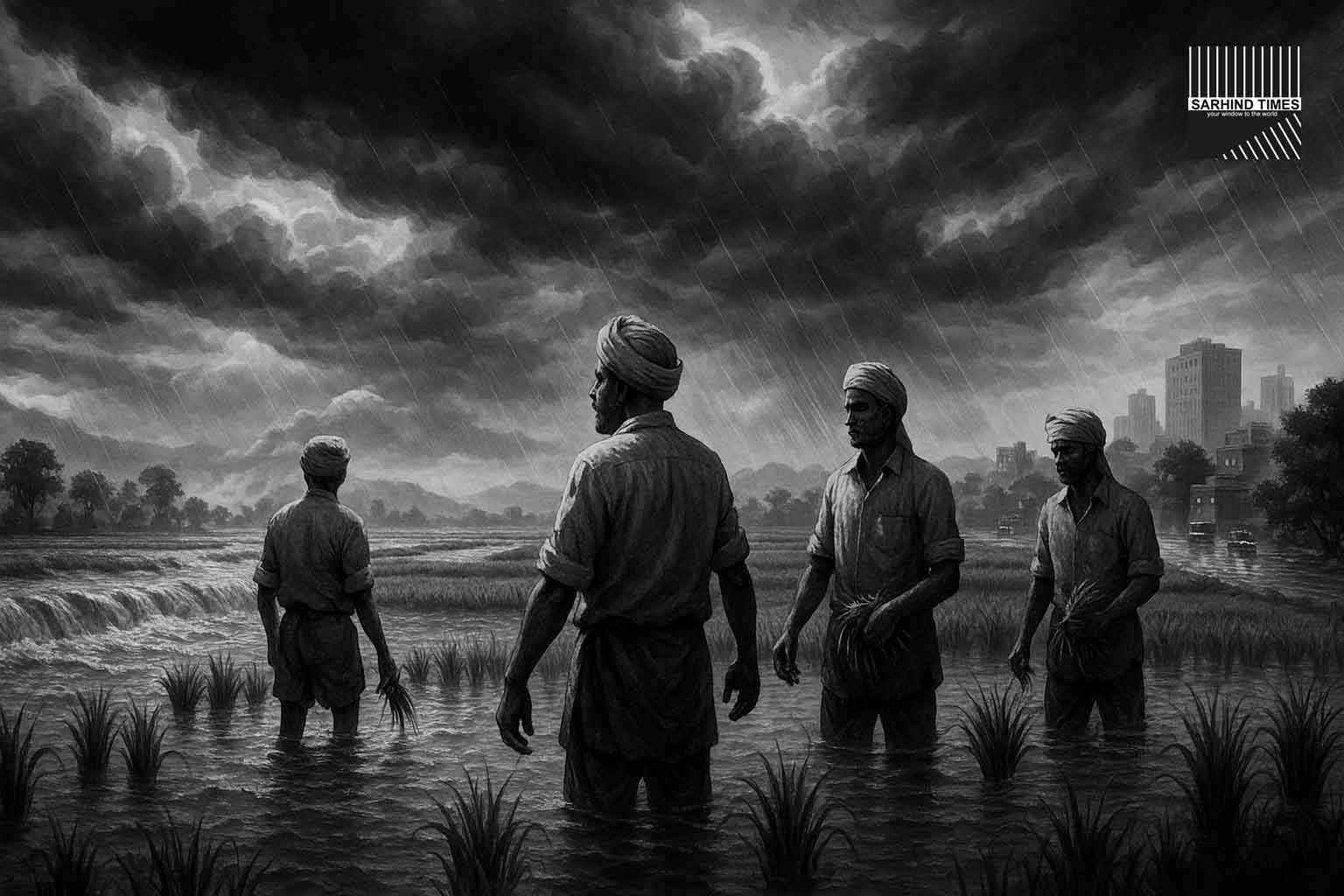New Delhi, October 1 –
The curtains on the 2025 southwest monsoon have fallen, leaving behind a season that will be remembered for its unprecedented surpluses across northwest India. According to the India Meteorological Department (IMD), the region witnessed its wettest monsoon since 2001, with Punjab, Haryana, Rajasthan, and Himachal Pradesh logging record-breaking excess rainfall.
The seasonal rainfall for the country as a whole stood at 108% of the Long Period Average (LPA), making 2025 the fifth-highest monsoon tally since 2001. While this bodes well for reservoirs, irrigation, and power generation, it also exposed the vulnerabilities of Indian cities, where waterlogging, urban flooding, and infrastructure stress became defining features of the wet months.
Breaking Down the Numbers: State-Wise Excess
IMD’s state ledger revealed striking figures:
- Punjab: +41% excess rainfall.
- Haryana: +33% surplus.
- Rajasthan: +64% — the highest of all, turning arid zones unusually lush.
- Himachal Pradesh: +39% above average.
Across northwest India, rainfall was collectively the highest in nearly 25 years.
National Picture: A Wet Year for India
On the national scale, India received 7.9% excess rainfall. Central India and the southern peninsula showed near-normal to above-normal totals, while eastern states like Bihar and Jharkhand saw uneven distribution.
The IMD confirmed that this was the fifth-wettest monsoon since 2001, following strong La Niña signals that sustained cloud systems longer than usual.
Reservoirs Brimming, Rabi Gets a Boost
Hydrologists report that reservoir levels across the country are at 90%+ capacity, ensuring strong water security for the upcoming Rabi cropping season. This will particularly benefit wheat, mustard, and barley sowing in the northern belt.
Power planners also welcome the data, predicting a rise in hydropower generation and reduced reliance on coal imports in the short term.
Urban Challenges: Waterlogging and Drainage Stress
The same rains that fed reservoirs also drowned cities. Gurugram, Delhi, Jaipur, and Ludhiana all saw repeat episodes of waterlogging, exposing poor stormwater infrastructure.
Urban planners are calling for:
- Retrofitting drainage networks.
- Strict enforcement of encroachment removal.
- Integration of climate-resilient urban design.
“The numbers highlight both opportunity and urgency. Reservoirs are healthy, but cities are drowning. We need a balance,” said a senior urban affairs planner.
Agriculture: A Mixed Bag
For farmers, the monsoon was both a blessing and a challenge:
- Positive: Better soil moisture, strong irrigation reserves, and healthy fodder supply.
- Negative: Floods damaged crops in parts of Punjab and Rajasthan, requiring accelerated compensation and restoration.
The Agriculture Ministry has issued advisories urging farmers to be vigilant against fungal diseases and pests, which thrive in post-monsoon dampness.
Climate Context: Wettest Since 2001
Climatologists are studying why the northwest was so wet this year. Early analysis points to:
- La Niña onset, which favors enhanced rainfall.
- Western Disturbances interacting with monsoon currents, prolonging showers.
- Changing climate variability, with higher extremes in both surplus and deficit regions.
Experts caution that excess does not equal balance—while some regions drown, others still remain vulnerable to deficits.
Economic and Social Impact
- Food Prices: Surplus rainfall will stabilize grain output, though localized damage may impact pulses.
- Insurance Claims: Flood-hit districts in Punjab and Rajasthan are already reporting higher crop insurance claims.
- Construction Industry: Delays in housing and infrastructure projects due to extended rains.
- Public Health: Increased mosquito breeding and risk of waterborne diseases.
Voices from the Ground
- Punjab Farmer: “The rain saved us money on irrigation, but flooded parts of my paddy field. Government help is needed.”
- Rajasthan Resident: “We saw lakes full that haven’t been full in decades. It is both beautiful and worrying.”
- Hydrologist: “This year shows the future—more variability, more extremes. Our systems must adapt.”
Looking Ahead: October Outlook
With a fresh low in the Bay of Bengal and IMD delaying withdrawal, October is expected to bring continued showers in several states. While this aids water recharge, it could also disrupt harvest logistics and festival season traffic.
Conclusion: Ledger of Rain, Ledger of Lessons
The 2025 monsoon will be remembered for northwest India’s extraordinary wetness. While reservoirs are brimming and agriculture is poised for a strong Rabi, the season has exposed glaring urban vulnerabilities.
As India heads into October rains and prepares for future monsoons, the challenge will be clear: convert surplus rain into sustainable security, and prevent it from becoming an urban nightmare.
#IMD #Punjab #Monsoon2025 #Rainfall #Reservoirs #Haryana #Rajasthan #Climate #IndiaWeather #Floods






















+ There are no comments
Add yours